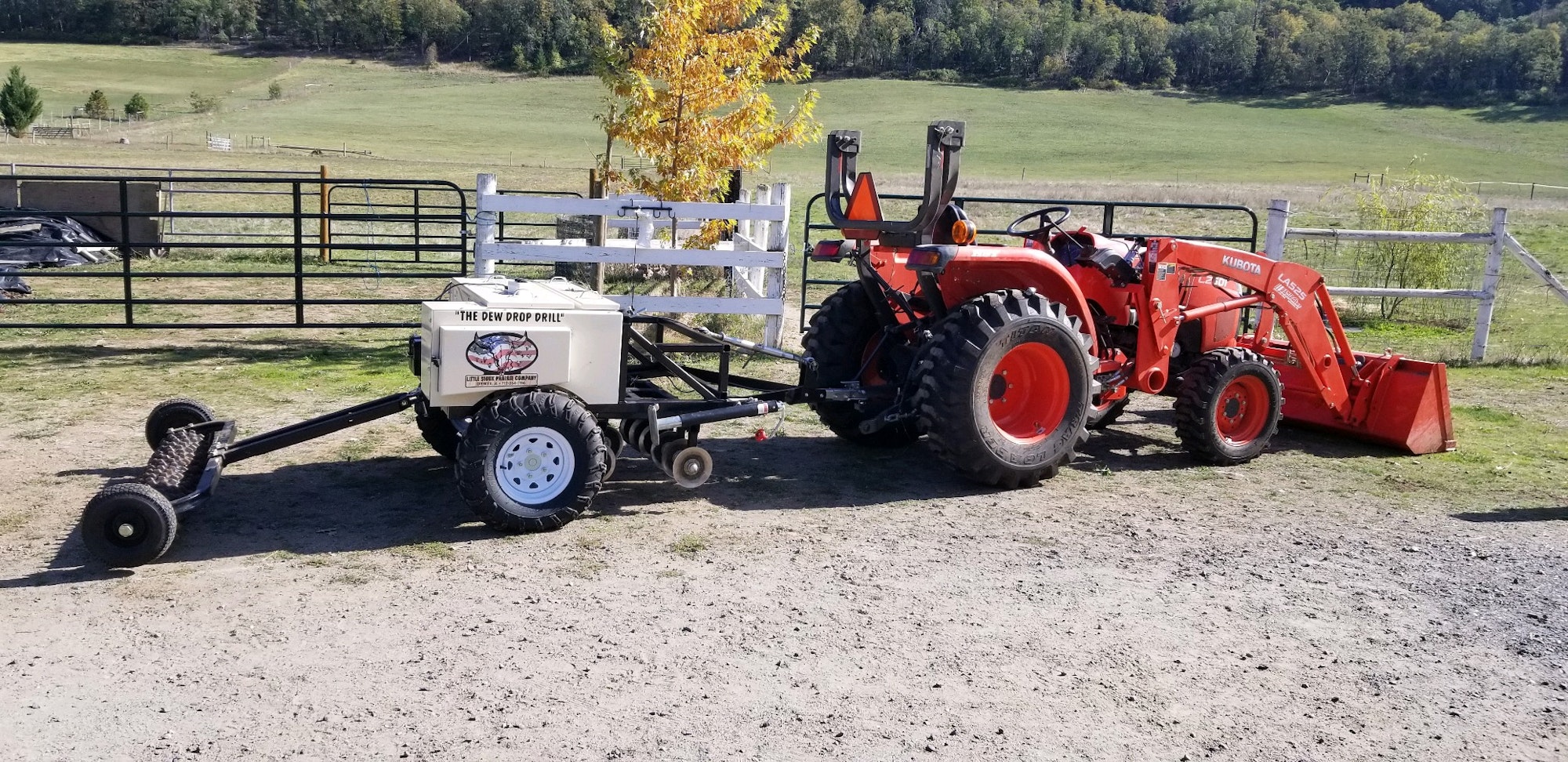Equipment Available to Rent:
Equipment is to be used on land located inside of Jackson County, Oregon.
If you are interested in renting equipment please email josh.bilbao@jswcd.org.
A $400 deposit is required for all rentals.




No-Till Drill Seeder ($50/day fee): The no-till drill seeder is an excellent cultivation and conservation tool. It can plant seeds at a relatively even distribution throughout a field without much soil disturbance. A cultivator furrows the soil enough to place seed, and a set of wheels follows to close the furrow. No-till seeding can reduce the loss of seed to predation and germination failure, increasing yields. It also reduces erosion and maintains soil structure essential for maximizing water holding capacity. Our no-till drill seeder requires a 40 to 50hp tractor to pull (NO EXCEPTIONS), and must be transported overland behind a truck utilizing a pin hitch. Contact JSWCD for more information on transportation and use of the no-till drill seeder. It will get stuck if you do not have the proper horsepower - If you have a smaller tractor, then you will need to use the Dew Drop Seeder below.
FLEX MODEL: FLXII 88
NO. OF ROWS: 8
ROW SPACING: 8 inches
PLANTING WIDTH: 5.3 ft
MACHINE WIDTH: 8.3 ft
Capacity: Small Seed Box .75 BU.
Fluffy Seed Box 3 BU.
Dimensions: 36”H x 59”W x 60”L (Not including the tongue)
No-Till Drill Seeder Instructional video by West Michigan Conservation District:
https://www.youtube.com/watch?v=G_zq3Ifz8pw
No-Till Drill Seeder Calibration demonstration:
https://www.youtube.com/watch?v=Q3VBh5IN9kM
ATV Minimum Size: 400cc
Dew Drop Drill Seeder and/or 48" Cultipacker ($50/day fee):



Dew Drop Drill User Manual:
The Dew Drop Drill seeder is an excellent cultivation and conservation tool. The drill plants seeds across a 3 foot width at random utilizing drop chutes. This results in a no rows natural seed placement. No-till seeding can reduce the loss of seed to predation and germination failure, increasing yields. Another benefit of the Dew Drop Drill is it reduces erosion and maintains soil structure essential for maximizing water holding capacity. The drill is operated by a deep cycle 12v battery mounted in the rear of the drill. Attached is a 15ft remote control switch that engages/disengages the seed boxes, as well as lift and lower the disks. This drill does NOT require the use of hydraulics. The drill can be pulled by any small tractor, UTV, or ATV (recommend 400cc or larger) and utilizes a 1 and 7/8ths inch ball hitch. JSWCD provides a utility trailer to transport the drill. OPTIONAL: A 48" tow behind cultipacker is also a great tool to utilize in conjuction with the cultipacker.
Dew Drop Drill Specs:
Capacity: Small Seed Box .75 BU.
Fluffy Seed Box 3 BU.
Dimensions: 36”H x 59”W x 60”L (Not including the tongue)
Weight: 650lbs
Disk Blades: 12 – 8” disc blades
Spring Tines: 10 – 11” tines
Power Supply: Self Contained 12v
ATV Minimum Size: 400cc
Coverage: 1 acre/hour (Average)
Dew Drop Drill User Manual:
Dew Drop Drill Information Video:
https://www.youtube.com/watch?v=DDwi6vmm0Q8
Soil Auger (Free to use): Before you spend money on expensive fertilizers, find out what your soil needs. Our soil auger will allow you to collect soil samples from your field or pasture that you can send to an analytical lab for testing. The soil auger is a hand held device that bores a small sample of soil approximately 8 to 12” deep. Contact JSWCD for information on collecting soil samples and a list of analytical labs that do soil testing.
Soil Moisture Step Probe (Free to use): Seeing is believing, and until you actually get down and dirty under the soil, it is almost impossible to determine how the soil is reacting to your irrigation management. If you wait until the plants show signs of too little water (or too much), it may be too late. A soil step probe allows the manager to easily determine what is going on beneath the surface without disturbing the crop. Use in conjunction with the Soil Moisture by Feel guide, found here.
Common questions the Soil Moisture Step Probe can help answer:
1.) When should I start irrigating?
2.) When should I stop irrigating?
3.) How thick is my grass/pasture thatch layer?
Simple Instructional video: https://www.youtube.com/watch?v=ca2FlOTGFC4
